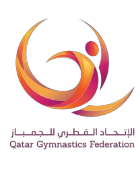
Gymnastics is one of the oldest known sports, with roots tracing back to ancient Greece, where it was practiced to develop strength, flexibility, and coordination. It evolved over centuries and became a formal competitive sport in the 19th century, particularly in Europe. The sport made its Olympic debut at the first modern Olympic Games in Athens 1896 for men, while women’s gymnastics was introduced in the Amsterdam 1928 Games. Since then, gymnastics has grown to include multiple disciplines, each showcasing a unique blend of athleticism, grace, and precision.
Artistic Gymnastics
Artistic gymnastics is the most recognized discipline in the Olympic programme. In apparatus-based events, male gymnasts compete on six apparatus: floor, pommel horse, rings, vault, parallel bars, and horizontal bar. Female gymnasts compete on four: vault, uneven bars, balance beam, and floor. The competition includes individual all-around events as well as team events, with scores accumulated across each apparatus.
Trampoline Gymnastics
Trampolining was added to the Olympic programme at the Sydney 2000 Games, featuring individual events for both men and women. Athletes perform aerial routines on a trampoline, judged on difficulty, execution, and time of flight.
Rhythmic Gymnastics
Rhythmic gymnastics, introduced to the Olympics in 1984, is a female-only discipline that combines elements of dance, ballet, and apparatus manipulation. Performed on a 13x13 metre floor accompanied by music, routines feature the hoop, ball, clubs, and ribbon. Individual gymnasts perform four routines, one with each apparatus, while in group competition, teams of five perform coordinated routines — one with five hoops, and another using a combination of two apparatus (e.g., three ribbons and two balls).
Team Qatar’s Participation
Team Qatar has taken part in gymnastics competitions at both the 2010 and 2014 Youth Olympic Games. At Singapore 2010, Ahmed Al Dayani competed in men’s artistic gymnastics, while Shaden Wahdan represented Qatar in the women’s events. At Nanjing 2014, Rahma Al Dulaimi competed in artistic gymnastics, and Nadeen Wahdan took part in trampoline gymnastics.
Regional Milestone
Qatar proudly hosted the 2018 Artistic Gymnastics World Championships, marking the first time this prestigious event was held in the Middle East — a major milestone for gymnastics in the region.
Qatar Gymnastics Federation
Established in 1994, the Qatar Gymnastics Federation is one of the country’s most dynamic sports bodies, having made significant strides in developing gymnastics locally and internationally. The federation oversees all disciplines recognized by the International Gymnastics Federation (FIG), including artistic gymnastics for men and women, rhythmic gymnastics, and trampoline.
With a strong focus on grassroots development, the federation has launched nationwide talent identification programs in schools and sports centers. These efforts have led to the rise of a new generation of Qatari gymnasts, most notably Rakan Al-Hareth, a standout athlete in men’s artistic gymnastics and one of Qatar’s leading national team members in regional and international competitions. Other promising names include Faraj Al-Emadi and veteran gymnast Ahmed Al-Naama, who have represented Qatar across Gulf and Asian events. In rhythmic gymnastics, Jouri Al-Shamlan and Maria Jamal continue to shine as emerging talents, earning recognition in Arab-level tournaments.
On the organizational front, the federation has positioned Qatar as a global hub for gymnastics by hosting top-tier events such as the FIG Artistic Gymnastics World Championships Doha 2018 and the FIG World Cup Series, held annually since 2008. The federation remains committed to nurturing elite Qatari gymnasts and advancing technical excellence across all levels — from youth development to Olympic representation.

Mr. Ali Al-Hitmi
President
Mrs. Abeer Al-Buainain
Secretary GeneralContact

